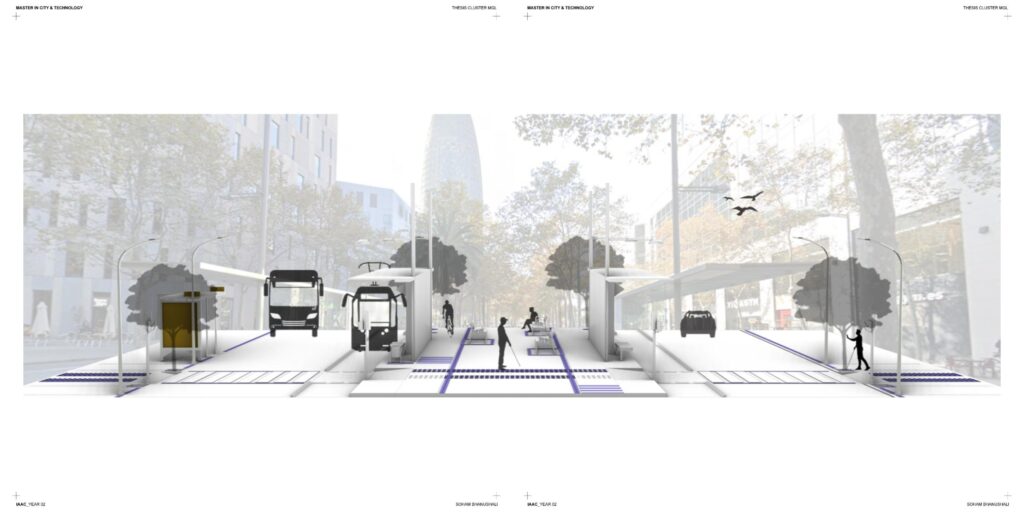An exploration how to enhance independent mobility for blind individuals by addressing psychological and systemic barriers. Using a participatory design approach, it goes beyond assistive tech to build an ecosystem of tools, behaviors, and spatial strategies that support confident navigation. A taxonomy with blind participants organise emotional, spatial, and user insights into a practical design framework. This serves as both a reflective and generative tool for creating inclusive, adaptive mobility solutions that promote autonomy over dependency.
An attempt to sensitise myself to the experience of navigating complex urban spaces and systems while not being able to see was made by blindfolding myself. This helped understand what elements and spaces made it easier or complicated to navigate these spaces while being devoid of the sense of vision.
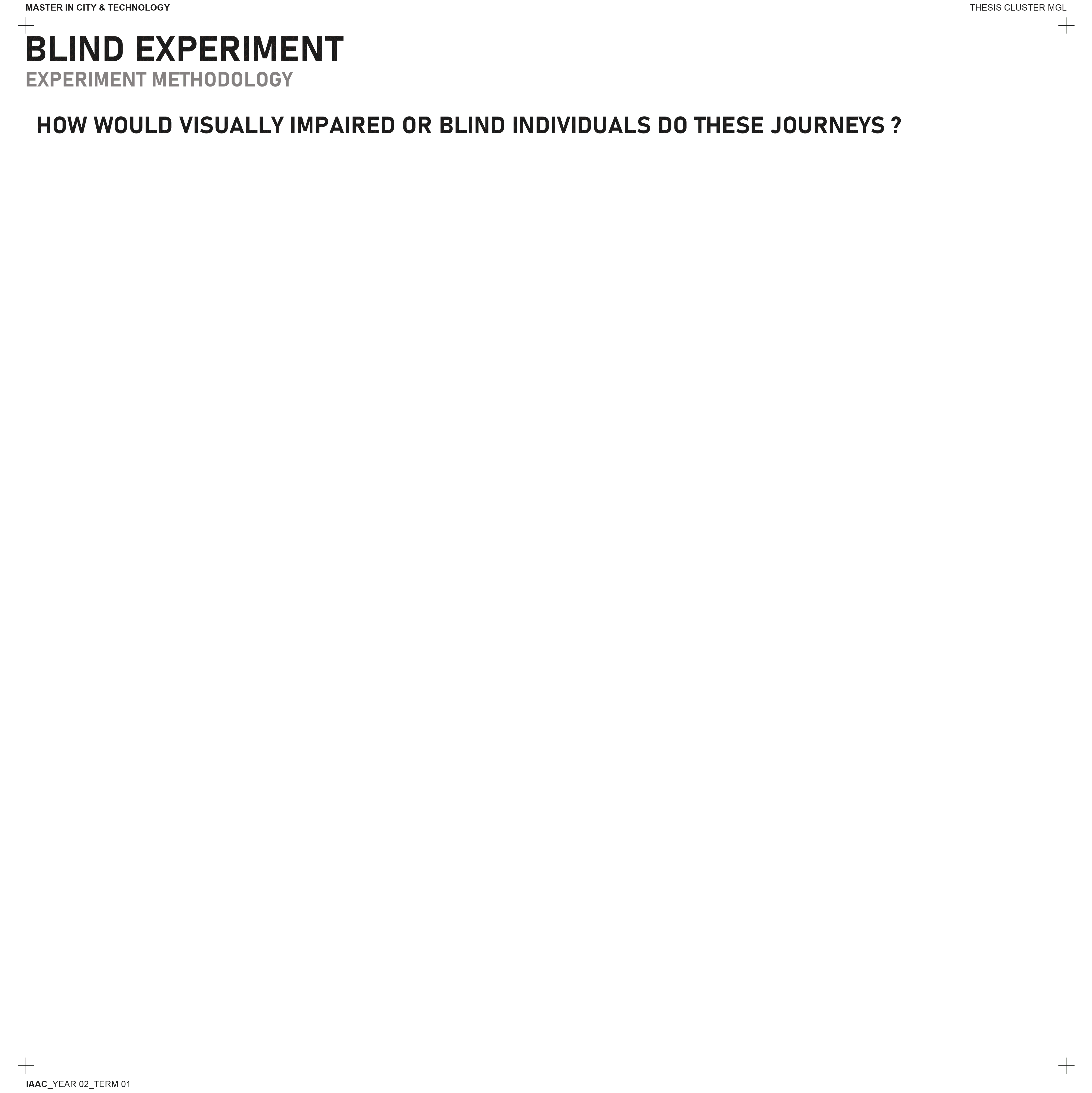
These were some examples of scenarios how a blind person would face certain scenarios and navigate through such urban environments while trying to feel safe and encouraged to go around the city more often
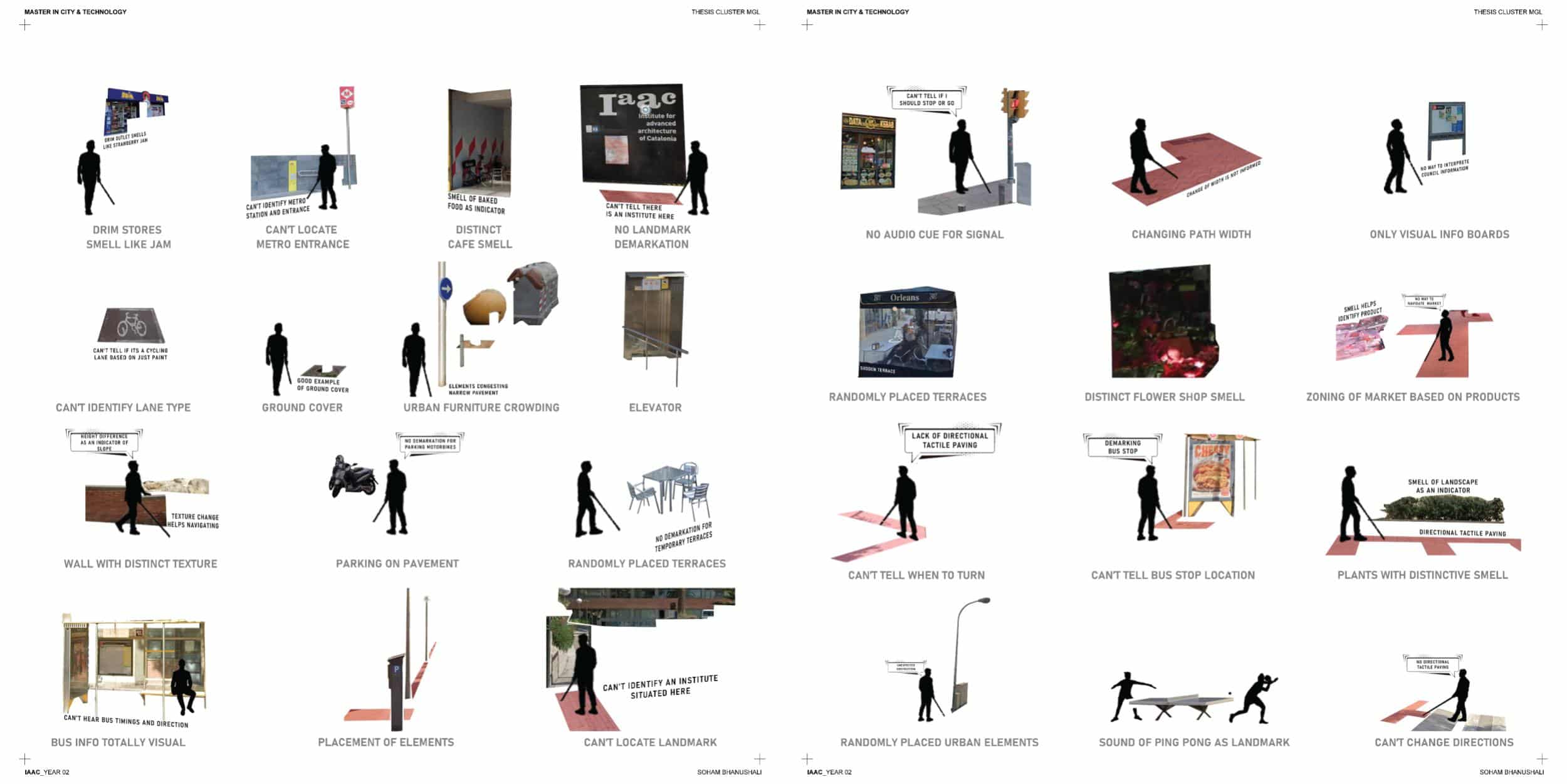
While mapping out all the elements while doing these journeys alot of them are validated by conversation with blind people I was familiar with to get feedback on if these elements and my experience with them were truly universal
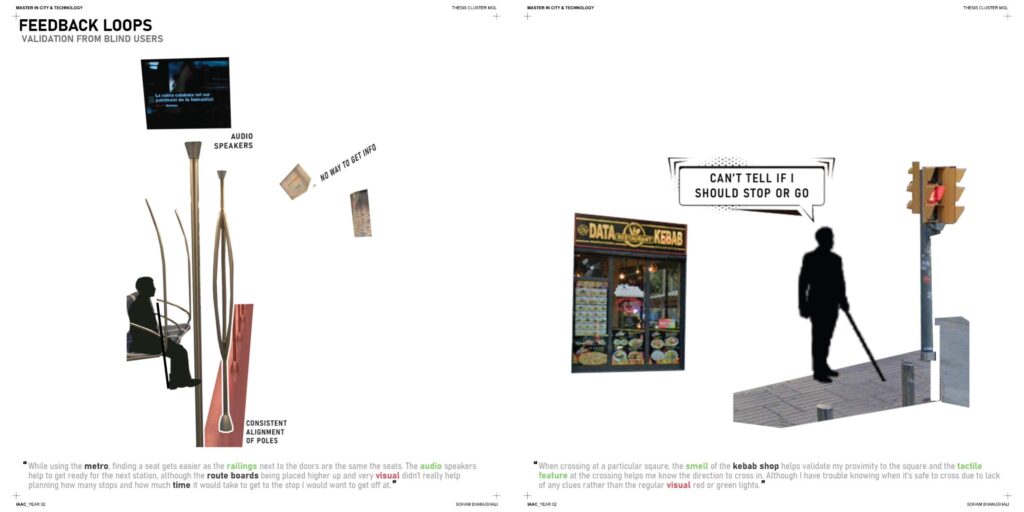
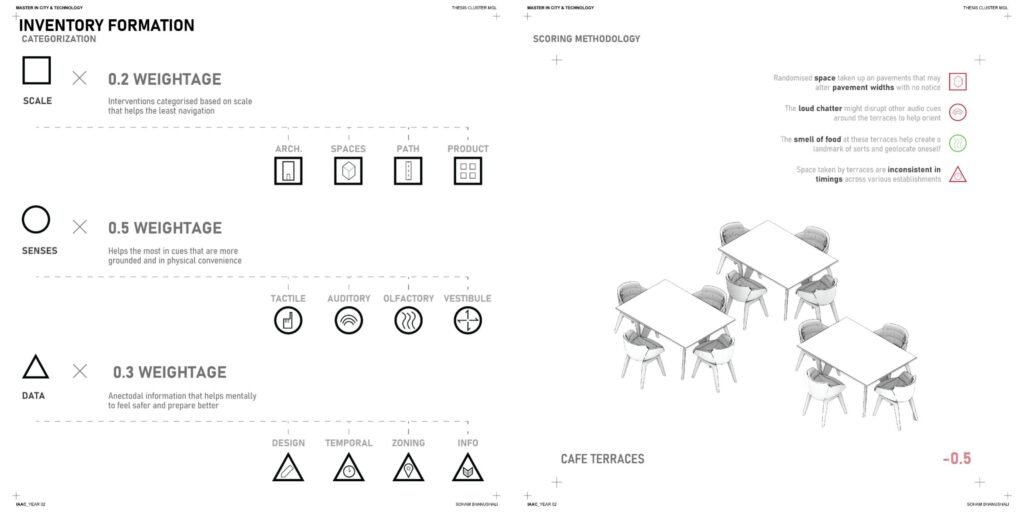
While validating these elements, a way to create the taxonomy to quantify something as qualitative as feelings and experiences whilst also the objective qualities of these elements and its role in the navigation of a blind person, the categorisation and scoring system based on weightage on emphasis of effeciency of these elements is what helped create the taxonomy and here is a sample of how it would work
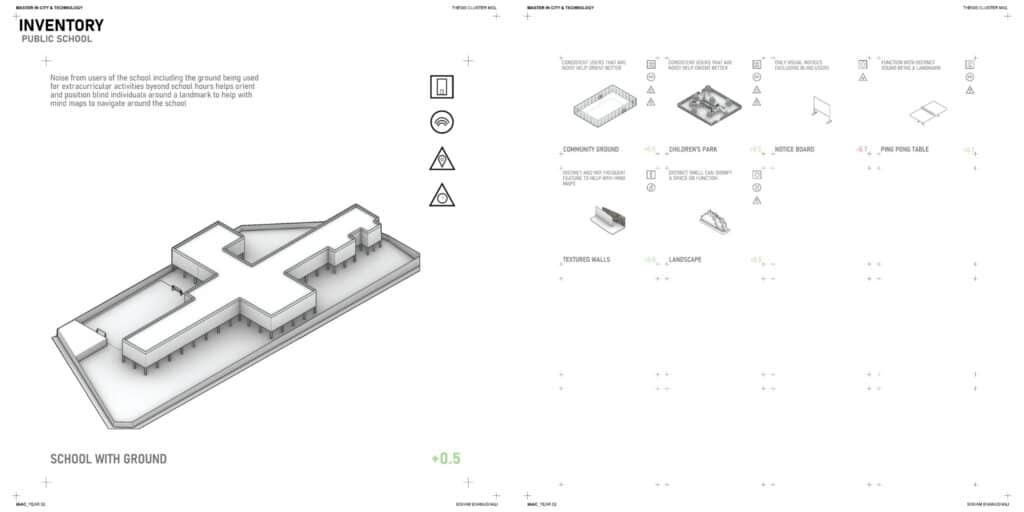
While trying to map out actual scenarios in the city of Barcelona to help concretise the taxonomy a pilot site of Avinguda Diagonal was selected as the pilot site to also come up with tactile interventions based on the taxonomy and categorisation while scoring the actual site
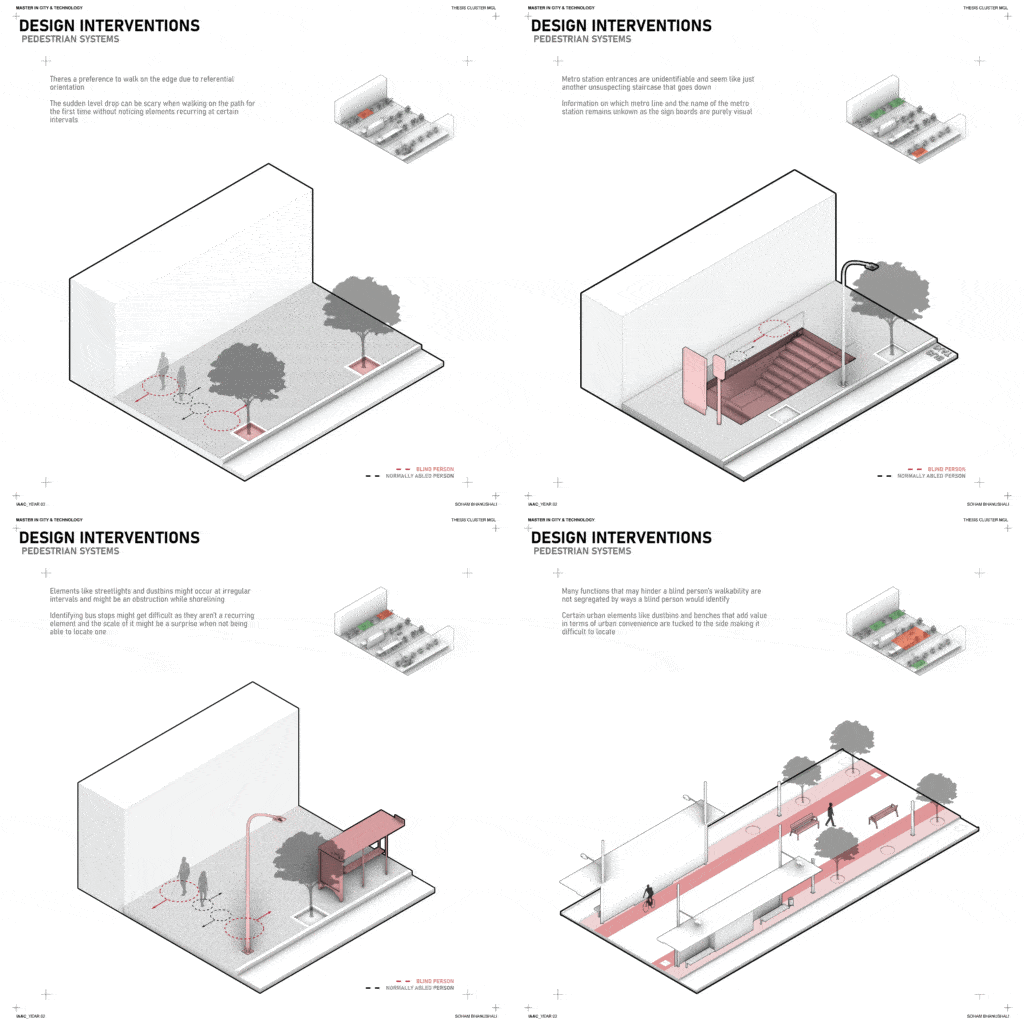
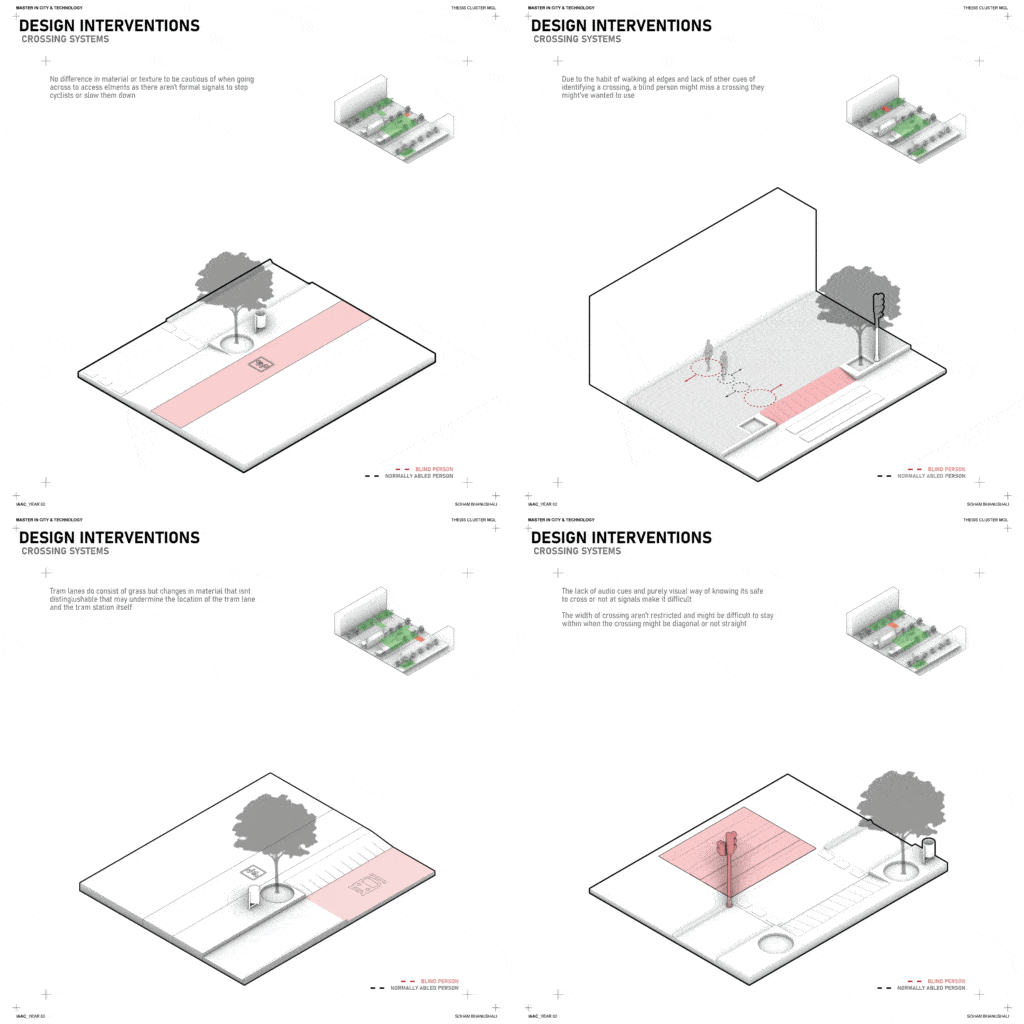
Here’s a similar breakdown of my design interventions that could finally be developed into a toolkit or design guideline for cities to follow and score spaces and sites to make them more accessible.
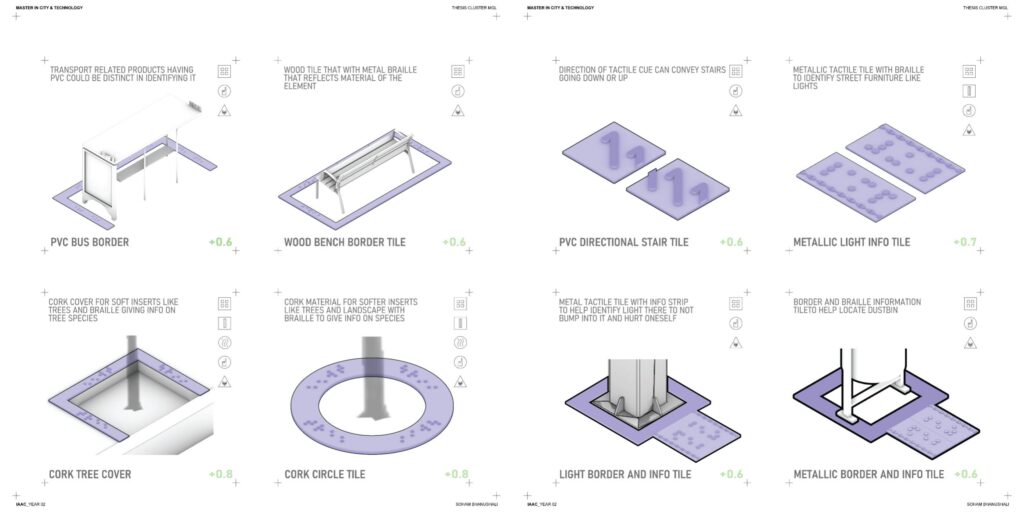

Here’s a possible adaptation of these retrofittings in the actual tactile urban environment at the studied pilot site of Avinguda Diagonal,
